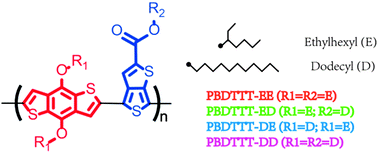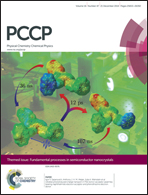Thermal conductivity of organic bulk heterojunction solar cells: an unusual binary mixing effect†
Abstract
[6,6]-Phenyl-C61-butyric acid methyl ester (PCBM), a fullerene derivative, is the most widely used electron acceptor in bulk-heterojunction (BHJ) organic photovoltaics, and its concentration is usually tuned to achieve optimal device performance. However, PCBM loading can significantly impair the thermal transport performance of the BHJs due to its ultra-low thermal conductivity (0.03–0.07 W m−1 K−1). In this work, we study the thermal conductivity of BHJs as a function of the PCBM concentration using time domain thermoreflectance. The thermal conductivities of BHJs composed of PCBM blended with donor polymers from the PBDTTT family with different side chains systematically deviate from those predicted by effective medium theory. Evidence presented in this work indicates that for these copolymers, only when the polymer concentration reaches a threshold value (∼30 to 35% volumetric fraction), does the thermal conductivity BHJ film start to increase, possibly due to the formation of high thermal conductivity percolation pathways.


 Please wait while we load your content...
Please wait while we load your content...